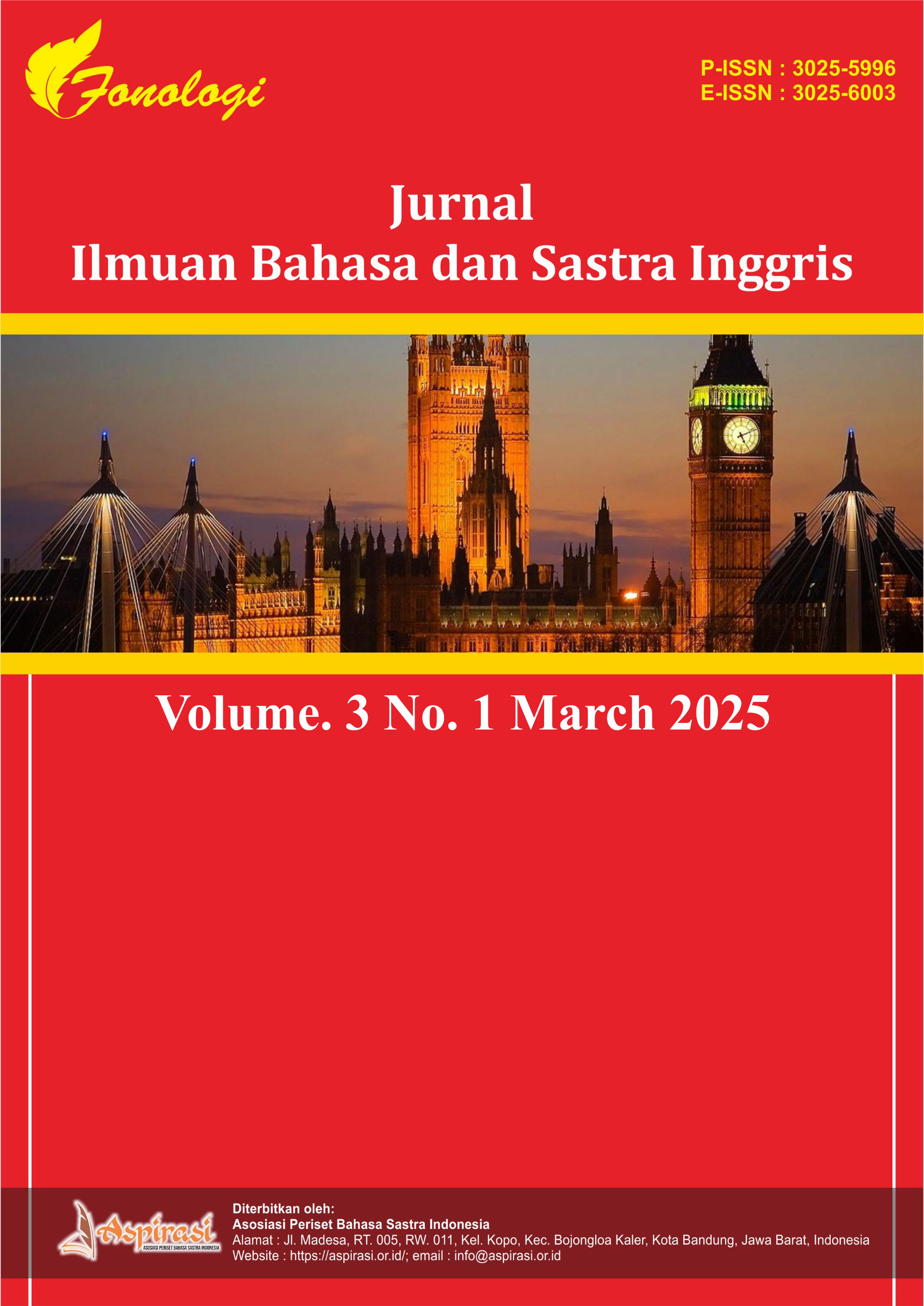Case Study : The Impact of Blended Learning on Students' English Writing Skills
DOI:
https://doi.org/10.61132/fonologi.v3i1.1277Keywords:
Blended-Learning, Writing Skills, Impact of Blended Learning, English StudentsAbstract
This case study investigates the impact of blended learning on students' English writing skills, focusing on a group of third-semester students majoring in English Education. Blended learning, which combines traditional face-to-face instruction with online learning components, is explored as a pedagogical approach that enhances writing proficiency through increased engagement and personalized feedback. Data were collected through questionnaires administered to 20 participants, revealing that a significant majority of students perceive blended learning as a motivating factor that fosters their writing development. The findings indicate that this approach not only improves grammar and overall writing skills but also provides ample opportunities for practice and constructive feedback, which are essential for skill enhancement. Additionally, the study highlights the importance of a supportive learning environment that encourages collaboration and community among students. The results advocate for the broader implementation of blended learning strategies in English writing instruction, emphasizing their potential to empower students and improve their language acquisition outcomes. This research contributes to the growing body of literature on effective teaching methodologies in language education and underscores the need for continuous adaptation and innovation in instructional practices.
Downloads
References
Al-Jarf, R. (2004). The effects of Web-based learning on struggling EFL college writers. Foreign Language Annals, 37(1), 49–57. https://doi.org/10.1111/j.1944-9720.2004.tb02251.x
Brown, H. D. (2007). Principles of language learning and teaching. Pearson Education.
Creswell, J. (2008). Educational research, planning, conducting, and evaluating quantitative and qualitative research. Pearson.
Dziuban, C., Graham, C. R., Moskal, P. D., Norberg, A., & Sicilia, N. (2018). Blended learning: The new normal and emerging technologies. International Journal of Educational Technology in Higher Education, 15(1), 1–16. https://doi.org/10.1186/s41239-018-0100-8
Flanegin, M., & Rudd, B. (2000). Integration communication skills and business education. Journal of Business Education. Retrieved from http://www.abe.villanova.edu/proceed2000.html
Garrison, D. R., & Kanuka, H. (2004). Blended learning: Uncovering its transformative potential in higher education. The Internet and Higher Education, 7(2), 95–105. https://doi.org/10.1016/j.iheduc.2004.02.001
Graham, C. R. (2006). Blended learning systems: Definition, current trends, and future directions. In The handbook of blended learning: Global perspectives, local designs (pp. 3–21).
Harmer, J. (2004). How to teach writing. Longman.
Horn, M. B., & Staker, H. (2015). Blended: Using disruptive innovation to improve schools. Jossey-Bass.
Keshta, A. W. (2013). The effectiveness of a blended learning program on developing Palestinian tenth graders' English writing skills. Education Journal, 2(20), 16–22.
Kintu, M. J., Zhu, C., & Kagambe, E. (2017). Blended learning effectiveness: The relationship between student characteristics, design features, and outcomes. International Journal of Educational Technology in Higher Education, 14(1), 7. https://doi.org/10.1186/s41239-017-0043-4
Lee, J. H., Nam, S. K., Kim, A.‐R., Kim, B., Lee, M. Y., & Lee, S. M. (2013). Resilience: A meta-analytic approach. Journal of Counseling & Development, 91(3), 269–279. https://doi.org/10.1002/j.1556-6676.2013.00095.x
Pakir, A. (1999). Connecting English in the context of internationalization [Electronic version]. TESOL Quarterly, 33(1), 103–114. https://doi.org/10.2307/3587710
Richards, J. C., & Renandya, W. A. (2002). Methodology in language teaching: An anthology of current practice. Cambridge University Press.
Shih, R. C. (2011). Can Web 2.0 technology assist college students in learning English writing? Integrating Facebook and peer assessment with blended learning. Australasian Journal of Educational Technology, 27(5), 829–845.
Sun, Z., & Qiu, X. (2014). Exploring the effectiveness of blended learning in improving writing skills via WeChat. The Asia-Pacific Education Researcher, 23(2), 1–8. https://doi.org/10.1007/s40299-013-0086-0
Walidin, A., Saifullah, M., & Tabrani, D. (2017). Penelitian kualitatif: Suatu proses penelitian untuk memahami fenomena manusia atau sosial. Jurnal Penelitian Sosial, 11(3), 255–265.
Downloads
Published
How to Cite
Issue
Section
License
Copyright (c) 2024 Fonologi : Jurnal Ilmuan Bahasa dan Sastra Inggris

This work is licensed under a Creative Commons Attribution-ShareAlike 4.0 International License.





